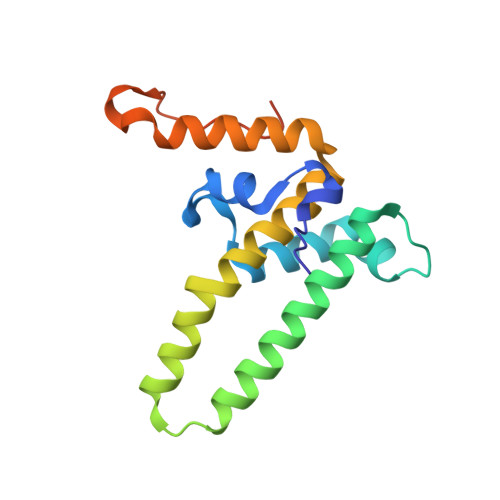Heteroaryldihydropyrimidine (HAP) and Sulfamoylbenzamide (SBA) Inhibit Hepatitis B Virus Replication by Different Molecular Mechanisms.
Zhou, Z., Hu, T., Zhou, X., Wildum, S., Garcia-Alcalde, F., Xu, Z., Wu, D., Mao, Y., Tian, X., Zhou, Y., Shen, F., Zhang, Z., Tang, G., Najera, I., Yang, G., Shen, H.C., Young, J.A., Qin, N.(2017) Sci Rep 7: 42374-42374
- PubMed: 28205569
- DOI: https://doi.org/10.1038/srep42374
- Primary Citation of Related Structures:
5T2P, 5WRE, 5WTW - PubMed Abstract:
Heteroaryldihydropyrimidine (HAP) and sulfamoylbenzamide (SBA) are promising non-nucleos(t)ide HBV replication inhibitors. HAPs are known to promote core protein mis-assembly, but the molecular mechanism of abnormal assembly is still elusive. Likewise, the assembly status of core protein induced by SBA remains unknown. Here we show that SBA, unlike HAP, does not promote core protein mis-assembly. Interestingly, two reference compounds HAP_R01 and SBA_R01 bind to the same pocket at the dimer-dimer interface in the crystal structures of core protein Y132A hexamer. The striking difference lies in a unique hydrophobic subpocket that is occupied by the thiazole group of HAP_R01, but is unperturbed by SBA_R01. Photoaffinity labeling confirms the HAP_R01 binding pose at the dimer-dimer interface on capsid and suggests a new mechanism of HAP-induced mis-assembly. Based on the common features in crystal structures we predict that T33 mutations generate similar susceptibility changes to both compounds. In contrast, mutations at positions in close contact with HAP-specific groups (P25A, P25S, or V124F) only reduce susceptibility to HAP_R01, but not to SBA_R01. Thus, HAP and SBA are likely to have distinctive resistance profiles. Notably, P25S and V124F substitutions exist in low-abundance quasispecies in treatment-naïve patients, suggesting potential clinical relevance.
Organizational Affiliation:
Roche Pharma Research and Early Development, Chemical Biology, Roche Innovation Center Shanghai, Shanghai, 201203, China.


















